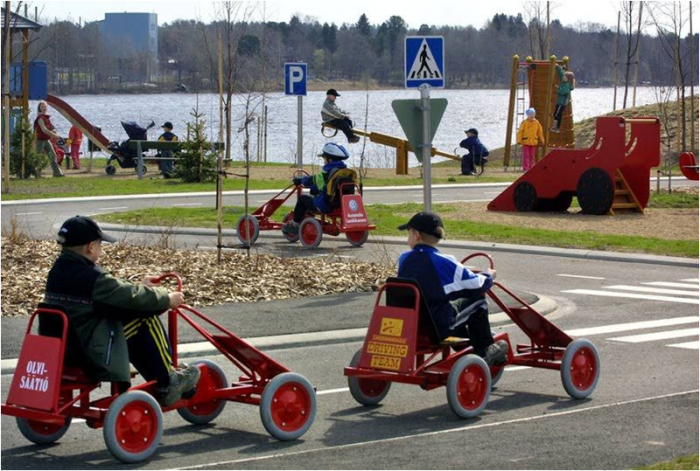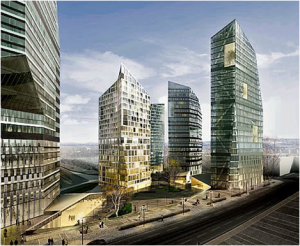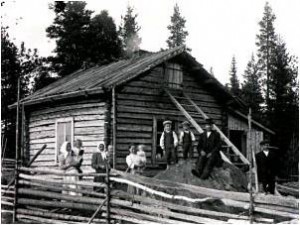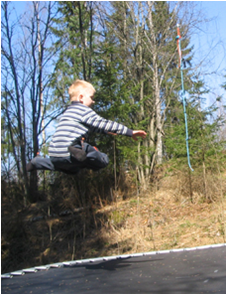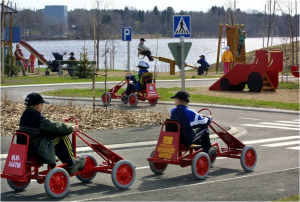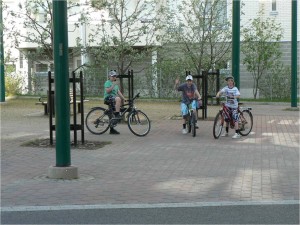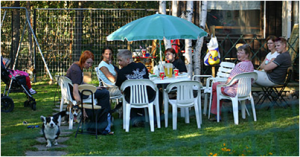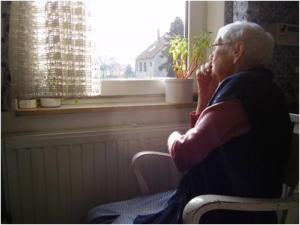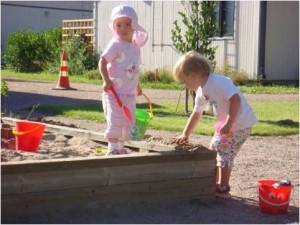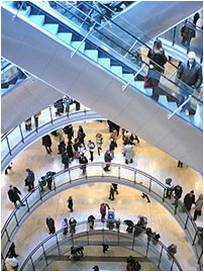I am an architect and while studying, we were taught that architects do good. For me that is the same as creating good living environments.
I must immediately confess one of the pitfalls that architects fall into, or maybe just my personal shortcoming: We often make generalisations based on a belief of the omnipotence of architectural aesthetics and on a notion that peoples’ behaviours can be steered to desired directions by designs of living environments.
If this was the preferred logic, a sawdust track for jogging should naturally be designed in the middle of a housing development because it would make people happier, thinner and healthier. Today I will, however, examine the concept of a Good Living Environment from many angles based on several multidisciplinary expert studies.
People value their home and residence from multiple angles
A person’s home and residence are central factors affecting his everyday life and his life styles. Generally, “home” is synonymous with the idea of “good life”. A person searches for his place of residence and for his home as a unique place which is significant for himself personally both as a physically and psychologically significant place. As PhD Environmental Psychologist Liisa Horelli has shown, housing can be an extremely multivariate and ambiguous psychological phenomenon (1993). The living environment can be experienced simultaneously in many different manners as a physical territory, scope for action, social system, emotional territory and extension of oneself. An enriched environment experience comes from a combination of multiple ways of experiencing one’s environment.
Seeing and experiencing one’s physical environment and residential area is part of being a human being and the descriptions of reality are necessarily manifold. Moreover, knowledge is culture-bound and thereby historically transient. A person has a conscious or an unconscious view of himself in relation to the present. A person cannot, however, formulate an objective idea of himself because he is always dependent on the target he observes, so he cannot exist without the world in which he lives.
By this logic, housing must be examined as part of a person’s current situation. The physical environment as a person’s situation is as much a social as a physical phenomenon. This is why it is not justifiable to analyse the milieu merely as a physical phenomenon. The milieu, or environmental landscape, must thus be observed through a person.It combines the physical world and the world of cultural significances.
In other words, the inhabitant’s personal view is critical when the quality of the living environment and one’s own home are evaluated. When studying the valuations of a good living environment, answer should be sought from within the inhabitants’ own evaluations based on their own experiences.
What does the Environment mean?
In environmental psychology, the “environment” refers to a system of interconnected physical, social and cultural elements.
The physical environment provides possibilities for action. Objects, buildings and natural environments make up a person’s physical environment.
Social environment is a term that refers to man-made official or unofficial networks or systems and communities in general.
Elements of the cultural environment are language, meanings, customs and unwritten rules, for instance. They are symbols of the physical and the social environment. At its most comprehensive, the concept of environment may imply a person’s entire situation in life. (Aura etc. 1997,15; Haverinen etc. 1993, 6-7.)
As we can see, the environment comprises many types of dimensions that are inter-connected.
It is essential to note how multivariate the concept of a good living environment is. Every person has their own understanding of the reality based on their own values and experiences, there is no objective “good” based on a mechanical conception of the world.According to Horelli, the living environment can be roughly divided into two, namely the space formed by the individual and the groups and the public space (Horelli, 1981, 183). Places of the individual and of groups are the home, the dwelling and its yard while public places are all those external to the home.
In environmental psychology, a good living environment is one that is practical, esthetical and inspiring (Jokinen, 2002, 50). A good living environment enables active functioning for people with differing movement needs, and offers possibilities for active social intercourse and action.
According to Doctor Marketta Kyttä, active functioning and life require many types of facilities for movement. There must be possibilities for action and functioning but at the same time the inhabitants must be able to control their environment. A good living environment offers experiences beyond those of the everyday life as well as beautiful scenery, private places and spaces for relaxation. At the same time it should provide a perspective in time by combining the history, the present and the future thereby strengthening a feeling of cohesion and fellowship (Kyttä 1991, 111–112.)
Architects refer to this as historical stratification of the living environment. This is also one of the reasons why architects do not eagerly design copies of old, historical buildings even though at times that is requested.
Well-being and the living environment
The feelings of well-being and enjoyment at a place are always comparative and personal.One person is happy at a place while the other person feels uncomfortable and not at all happy at the same place. Well-being and enjoyment at a place come from small things and a bit bigger ones in the everyday life. Every person experiences his environment in a different way and a living environment that one person finds restrictive and poor may in another person’s mind be quite good. Goodness and inferiority are defined by the context by the interaction of the people and their environment (Kyttä 1991, 111-112). The living environment and the local area are of major significance for peoples’ well-being.
Well-being means different things at different times because it is always connected with the time, with the values and with the societal structures. Well-being is often defined as a state that allows people to satisfy their needs. Satisfaction of one’s needs is based on subjective assessment of the state of well-being, and it is affected by a person’s assessment of his quality of life, satisfaction and happiness.
Housing environment to support the entire life span
A city and a living environment can also be looked at from different perspectives, as for instance an old person’s city is not the same as a student’s city, and a toddler’s and a pre-school child’s environment is totally different from the high technology environment. Moreover, the housing environment does not feel the same in the day as it feels in the night. The functionality of the living environment should additionally be examined through the different cultures because the cultures of the inhabitants are distinct (Koskiaho 1997, 28). The various phases of life come with their own, unique expectations on the environment, and when they are met people can move on to the next phase (Horelli, 1981, 198). Whether the housing environment fulfils our needs or not determines how we enjoy the life there.
Children
Children grow and mature at home and in their local area. It is not at all insignificant what kind of environments the children live in.
Do the housing and living environments support children’s activities, and what kind of experiences of succeeding do they give to the child? For a very small child, most important in an environment is that it is as stable and safe as possible. A child should have a chance for privacy and for his own “expeditions” in such a way, however, that it is easy for him to return to adults and other children (Kyllönen & Kurenniemi 2003; Aura etc. 1997.)
Pre-school children
At pre-school age it is important for children to be allowed to expand their territory first to the yard and then beyond that. Children do not thrive in a fenced playground for an extended period which is why the living environment must ensure their safety yet allow them to continue their empirical learning process.
Playgrounds should not be separated patches but they should be merged into their environment. Good living environments provide points of reference such as squares, playing fields, rug washing docks and beaches for swimming. Even though one may visit them only for short whiles at a time they are important builders of one’s identity because they provide an opportunity to meet others. Children and young people should be invited to participate in housing area planning because that way they will grow interested in their environment, their feeling of the self is strengthened and their fresh ideas are put into use.Moreover, children will also get the feeling of being involved in something important and this again might lead them to be socially active also in the future. (Horelli 1981; Aura etc. 1997, 67-78.)
Young people
Young people need privacy, their own space and peace. On the other side, friends and own gangs are important to them.
Young people personify their own rooms and make them their own. Schools should be made pleasant and welcoming because they and their immediate surroundings are integral parts of the young peoples’ everyday lives. Young people look for action, and this is why they often gather in unsupervised places such as parks and beaches.
Ympäristöpsykologian perusteet, the textbook on environmental psychology (Aura etc., 1997) emphasizes that a young person’s need to build his own identity requires a positive response from the surrounding social and physical environment. If the human relations in the everyday routines contain no feelings, if streets, squares and yards are rationalized and empty and if institutions are totally standardized it will be difficult to even look for that necessary response (Aura etc. 1997, 79-86).
Adults
A good housing environment provides adults with opportunities for rest, hobbies, work and social contacts. Important factors in the process of choosing one’s home may be the existence of a private yard with a garden, or the possibility of having a designated space for leisure activities in connection with the residence building. A study I made in the summer 2010 indicated that the need for autonomy and self-expression were the biggest reasons behind the decision to build a single-family house.
Adult social contacts often extend beyond their own residential areas. Regardless, they generally consider the local area important for the smooth and comfortable everyday life. (Kyllönen & Kurenniemi 2003).
Aging
As we age, the local area again gains in importance. Each of us obviouslyexperiences aging in a unique and different way, and the chronological age does not necessarily correspond with our subjective age. People of 70 and over commonly live an active and healthy life today and travel well beyond their local areas. Good health, ability to manage in the everyday and good interpersonal relations give satisfaction in life to the aging. Poor health, changes in housing, narrowing social networks and limited manoeuvring area may on the other side cause feelings of loneliness.
The support of the immediate community and the people around us becomes more important as moving about becomes more difficult for us, and good traffic connections and easy access to services will be equally essential (Aura etc. 1997, 86-93.) A well-designed and functional home makes it possible to live on one’s own and to enjoy life as a senior citizen. The immediate surroundings and the local area should provide possibilities for outdoor exercise and recreation. This is why green spaces and gardens are absolutely necessary. Parks provide spaces for both privacy and social contacts.
Public spaces and premises and pedestrian zones open up possibilities to observe the urban life around us. Public transport, accessibility and security of one’s surroundings improve the quality of life. As a person ages his functionality generally diminishes while a bigger part of his day goes into daily chores and resting (Kyllönen & Kurenniemi 2003; Aura etc. 1997, 90-91.)
The senior people often prefer familiar routes and services as the familiarity tends to strengthen their feeling of autonomy while unfamiliar places may evoke feelings of uncertainty.
Even familiar places may stir up feelings of alienation: in daylight a square is a safe shopping and meeting place but in the evening and night it may appear dark and frightening. As people grow older, their relation with the environment is built increasingly on memories. This is why older people often prefer places that evoke memories. Memories and the past are what a person’s identity is based on, and for this reason they are important (Aura etc. 1997, 90-91.)
The biggest increase in the number of single person households will be amongst the oldest citizens. More emphasis should be put on developing services specifically designed for single person households so that independent living would be possible longer into the old age, and thereby the need to move to old peoples’ homes and sheltered housing could be postponed or avoided. The housing environment should not be designed for merely one phase in life, the adulthood. It must conform to our entire life cycle, and support us from childhood to the old age.
Esteemed policy and decision makers – Dear audience,
As we can see, the definition of a Good Living Environment requires that we identify with many different kinds of inhabitants in their different life situations.
Instead of a definition and an answer we can only present another question: Are we one hundred percent certain that when we make decisions concerning the future of our dear home country Finland and our living environments we always remember to take equally into account the wishes and expectations of all inhabitants?
As the German philosopher Martin Heidegger put it, we are all thrown into the world amidst things and with others.
Retelling Heidegger’s thoughts: I care, therefore I am, I exist, I am the centre of the universe, my world is gone when I am gone. Therefore, I am the centre or at least placed at its centre.
That is my point of departure, that is where my home is, that is where I draw my understanding from, that is where my paths start.Even though we were thrown into the world we do not want to be or feel abandoned. We need to settle down somewhere, to root somewhere, and to feel safe so that we would not be forsaken.
Knowingly or unconsciously, an anticipation is created between our refuge and the world, between the familiar and safe home and the dangerous, fraudulent world. This anticipation and tension consolidates our relation with the refuge, our own home and our living environment.
Travels and absences further shape the meaning of the home, and the concepts “home” and “away” emerge. Longing to be out in the big world when the home territory feels too cramped, and again yearning for home and the familiar environment when the magnitude of the world begins to harass.
Adapting the words of Professor Matti K. Mäkinen: The currents of my memories always lead me back home.
Thank you.
